Ridge tracing in fingerprint is used to obtain the classification value for Whorl by drawing an imaginary line from the extreme left to right delta and then counting the intermediate ridges.
The techniques depend upon the establishment of the focal points of the deltas and then tracing an imaginary line between them.
What is the Need for Ridge Tracing in Fingerprint?
Ridge tracing values are used to classify the fingerprints in simpler terms. As fingerprints are unique, it is nearly impossible to capture each whorl pattern and then match them one by one. This not only takes a lot of effort and time which is not an efficient way.
So, to classify whorl patterns in fingerprint systems such as Henry classification, these whorl patterns must be valued either by numbers or alphabets that are unique to a specific set of parameters in a pattern. And that’s what ridge tracing is needed for.
Specifically, in the Henry Classification system, ridge tracing values are used in the Major division and subsecondary division of fingerprints.
Why Ridge Tracing is Only for Whorls?
Ridge Tracing is only for whorls, as it required two deltas to work on. In other words, ridge tracing is only made to calculate the values of Whorls.
Other major patterns such as arches and loops have their own marking parameters such as:
- For Arches: capital and small letters are used.
- For Loops: ridge counting is employed.
- Similarly, for Whorls: Ridge tracing is used in some classification systems.
Rules of Ridge Tracing of Whorls Fingerprint Patterns
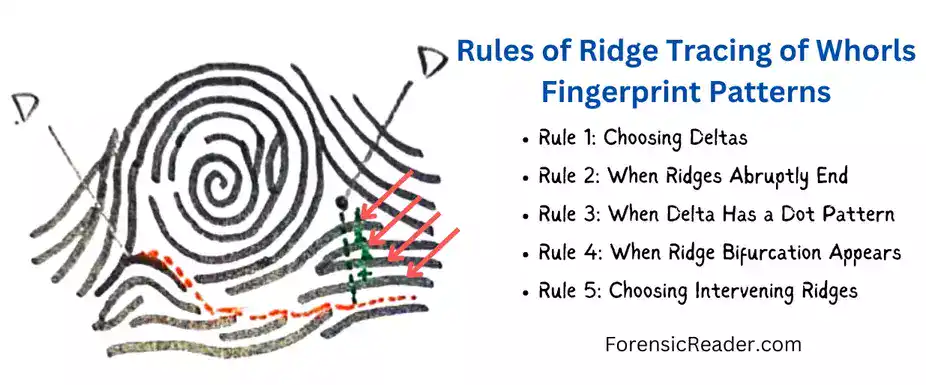
Rule 1: Choosing Deltas
Ridge tracing always starts from the extreme left delta and ends at the extreme right delta or nearest point.
For patterns such as simple whorls, they only have two deltas, so the left one is considered as the starting point and the right one as the endpoint.
The following image represents some of the various whorl patterns and their respective left and right deltas.
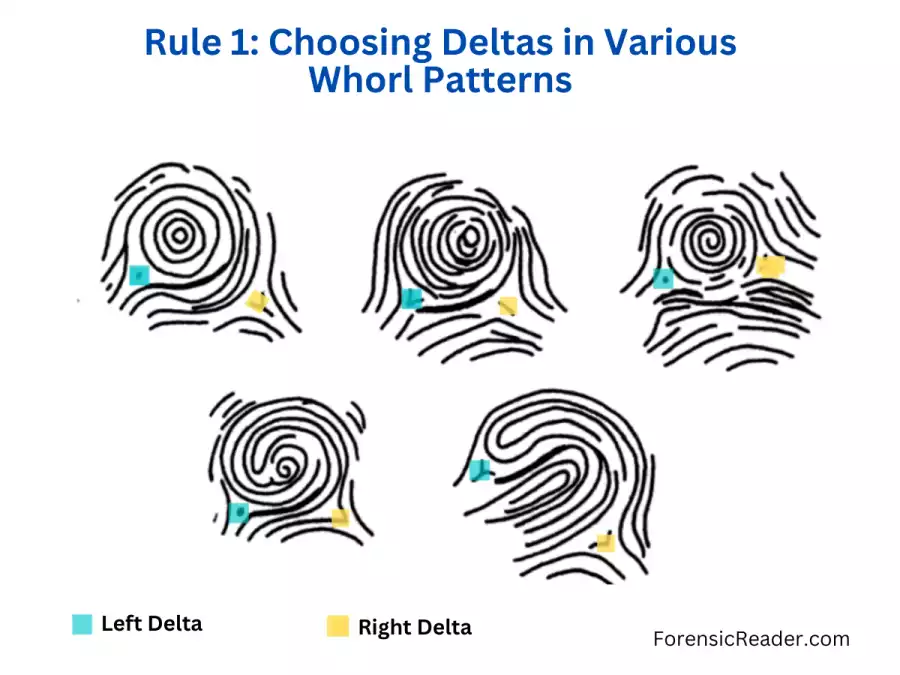
However, for accidental/composite whorl, there might be more than two deltas, in that case, you have to choose the extreme left and right deltas. This is an example of accidental whorls with three deltas.
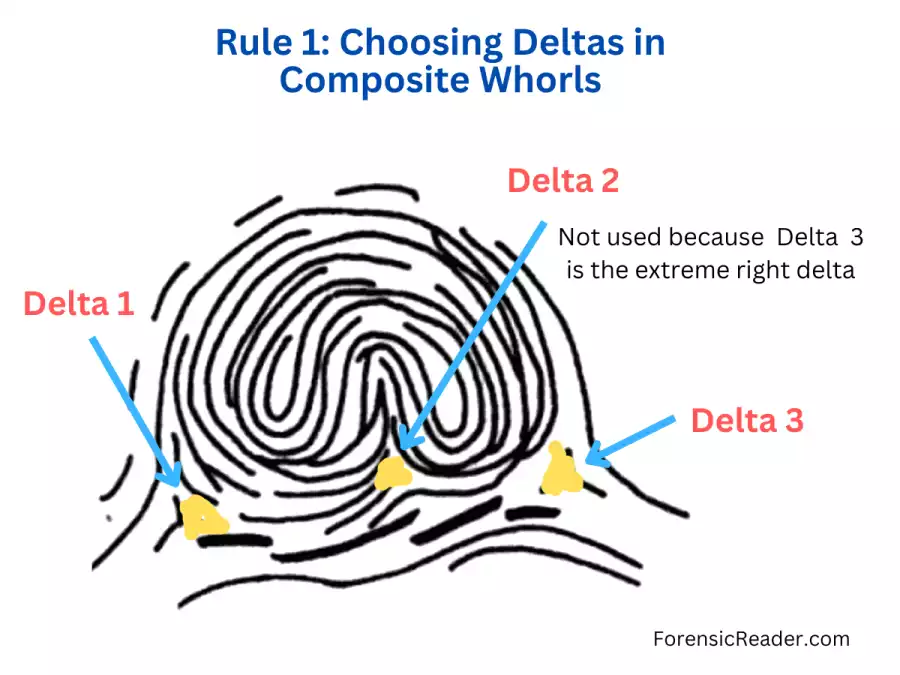
Rule 2: When Ridges Abruptly End
While tracing ridges, when a ridge ends abruptly, tracing drops to the next lower ridge (immediately beneath the point where it ends) and continues.
Here are given image, Ridge (1) abruptly ends, so as per the rule ridge (2) is selected which ends after small curving, which then continued to ridge (3) then ridge (4), and finally continued to ridge (5) that is the nearest point to the right delta.
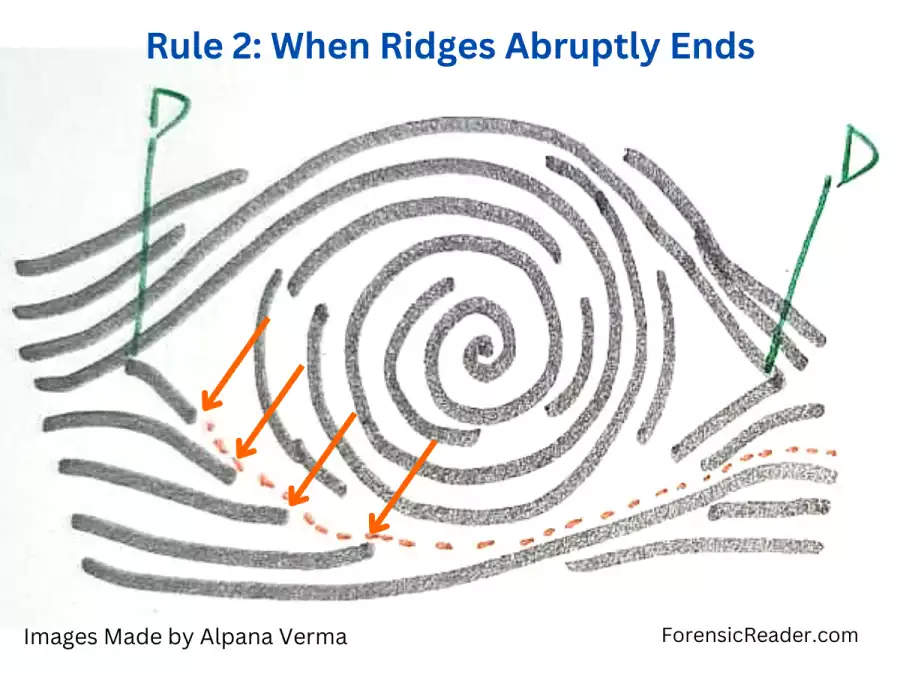
Rule 3: When Delta Has a Dot Pattern
It follows the same rules of abruptly ending. That means the very next lower ridge is used for tracing and continues in the same fashion.
In the given image, you can see a dot pattern is present at the left delta, which passes the tracing to the next lower ridge which continues to the right delta.
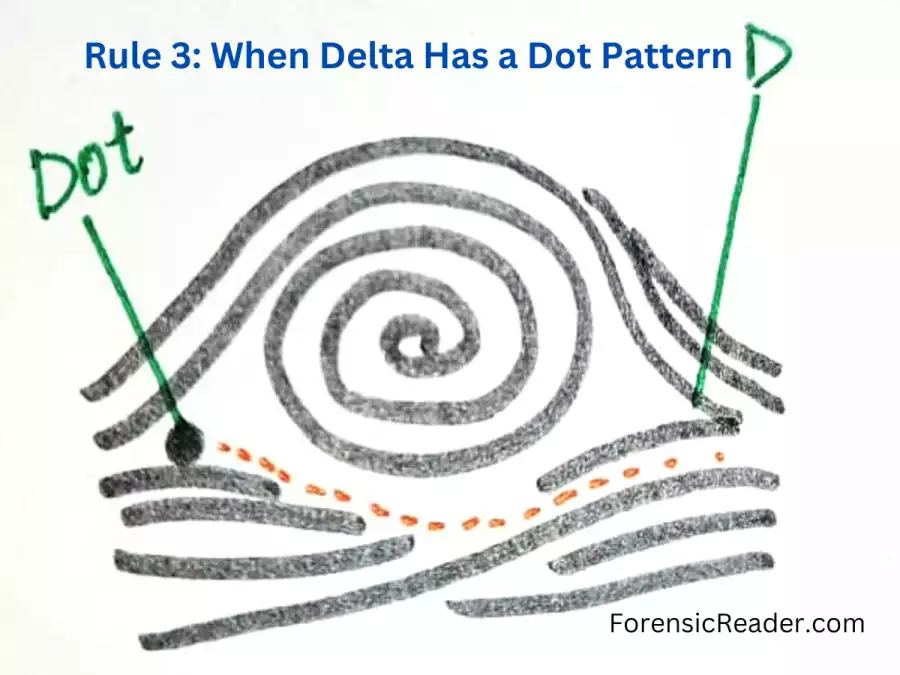
Rule 4: When Ridge Bifurcation Appears
A bifurcation can be represented as branched ‘Y’. A ridge divided into two and then continued.
So, if the fingerprint whorl pattern has a bifurcation, ridge tracing is continued through the lower branch of ridge bifurcation.

Rule 5: Choosing Intervening Ridges
The intervening ridges should be counted in numbers between the traced imaginary line and the right delta. Here is an example of choosing the correct ridges.
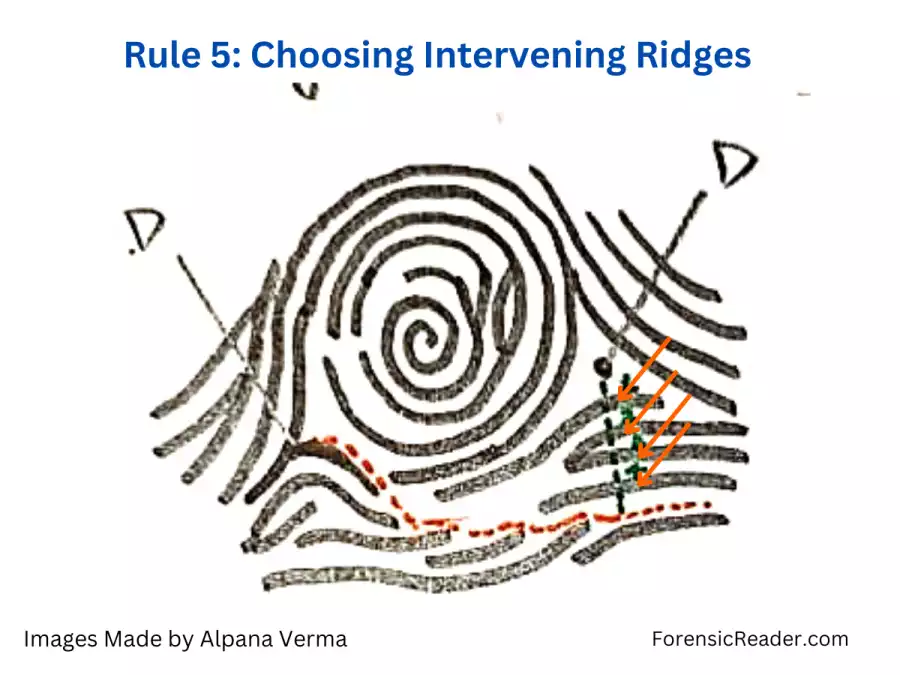
Read More: 47 Branches Of Forensic Science: Disciplines And Division With Evidence And Case Types
Classification of Ridge Tracing Patterns for Whorls
There are three main categories on which ridge tracing can be classified. These are:
- Inner Whorl
- Outer Whorl
- Meeting Whorl
1. Inner Whorl
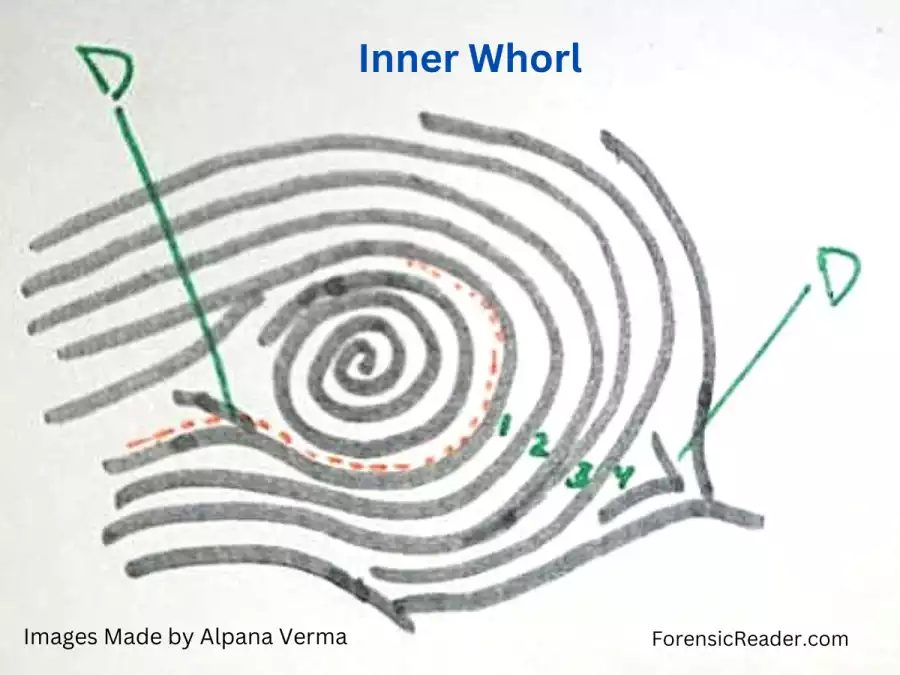
If the traced ridge goes above or reverse back inner before reaching to right delta and there are three or more interviewing ridges between the traced ridge and the right delta. It is considered as INNER (I).
An imaginary line recurving above the right delta doesn’t always call to be Inner. It must fulfill the second criterion i.e. 3 or more intervening ridges between deltas and traced ridges.
2. Outer Whorl
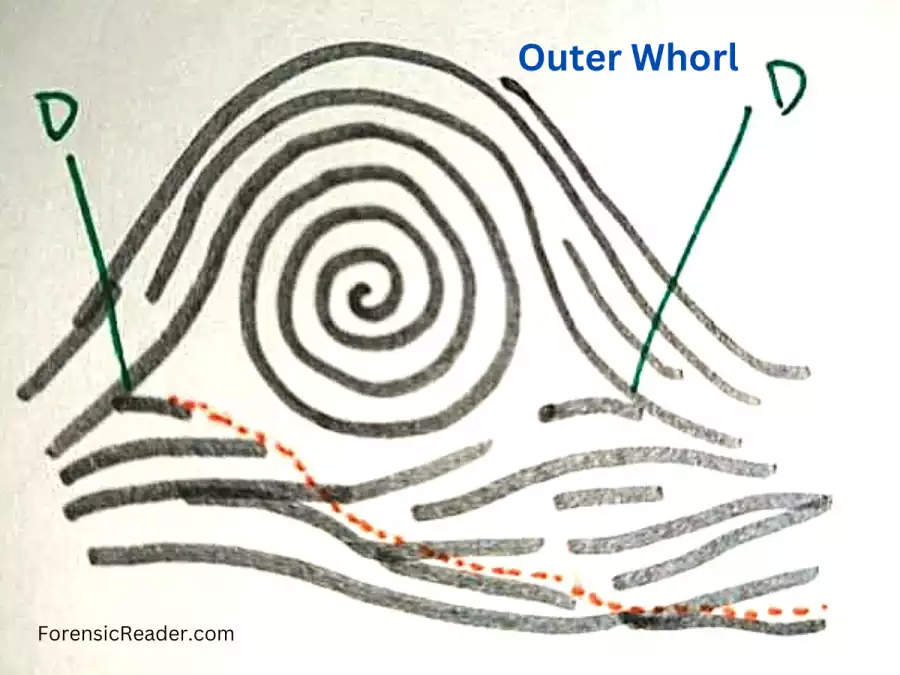
If the ridge tracing followed near the right delta’s relative point above or below with three or more intervening ridges between such delta and traced ridge. It is called an OUTER (O).
Similarly to Inner, not all whorls that end below the right delta are considered outer. It must have 3 or more intervening ridges between deltas and traced ridges.
3. Meeting Whorl
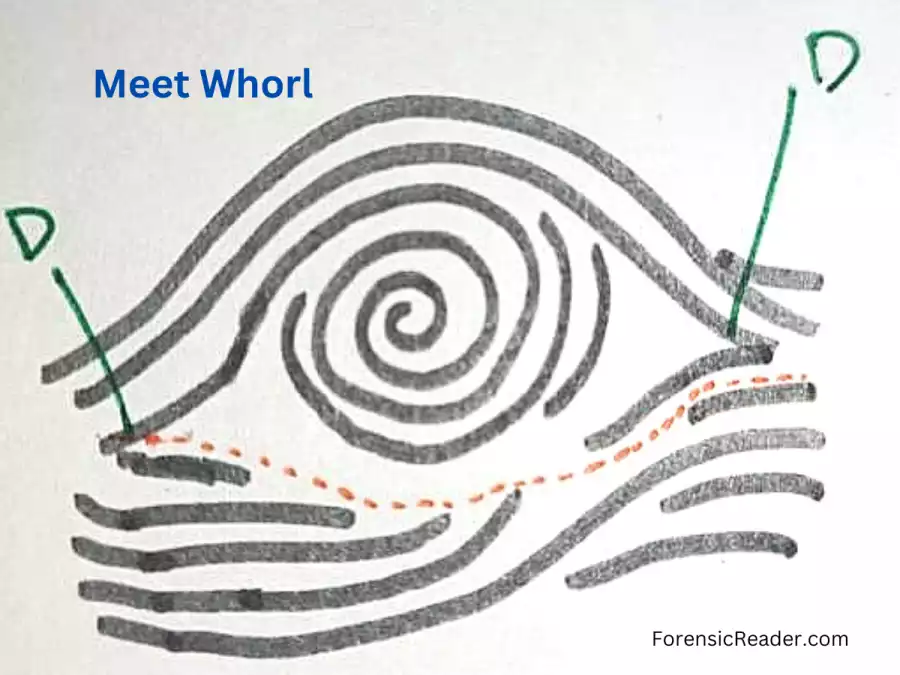
If the tracing of the ridge starts from the left delta and is followed to the right delta or nearest to it with one or two intervening ridges between the delta and traced ridge.
In other words, all other tracings that end, above or below the right delta and have less than 3 intermediate ridges, are always classified as Meet.
How to Calculate the Ridge Tracing Values for Whorl Fingerprint Patterns?
Step 1: Choosing Deltas
Choose the left and right delta points in a given whorl pattern.
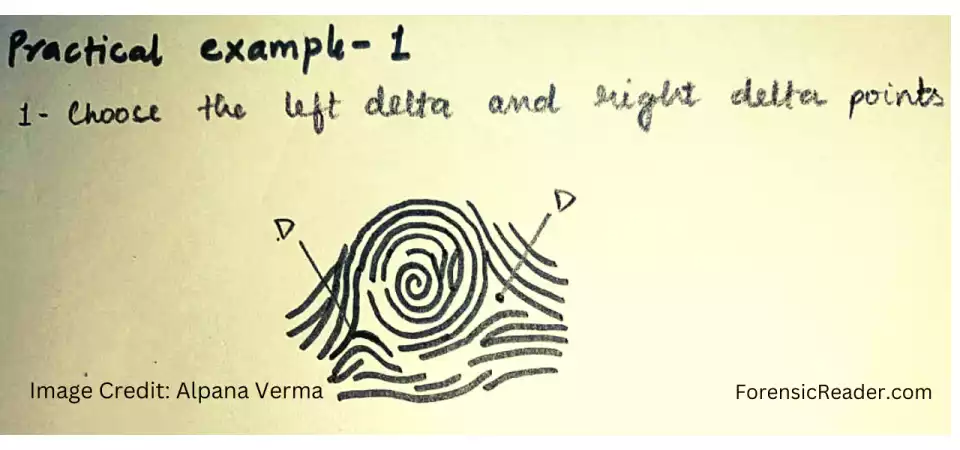
Step 2: Start Ridge Tracing from Left Delta
Ridge tracing starts from the left delta and proceeds toward the right delta.
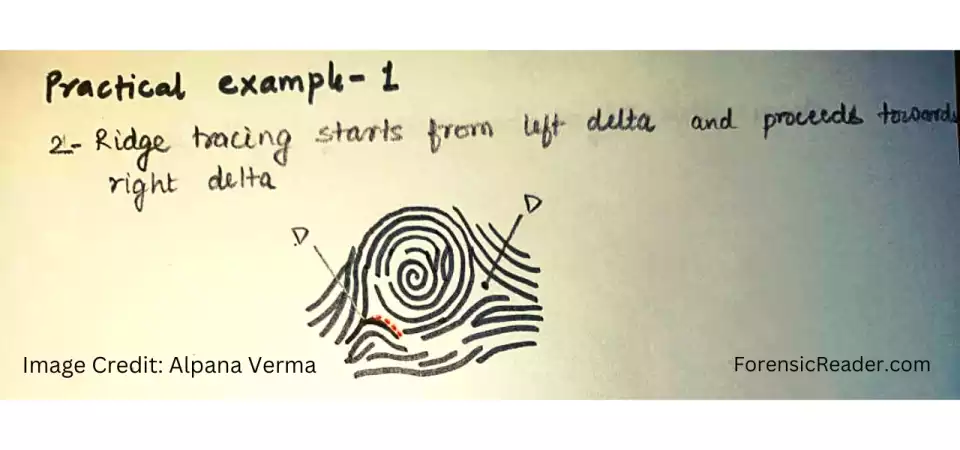
Step 3: Continue the Abrupt Ends
When the ridge ends abruptly, tracing drops to the next lower ridge and continues.
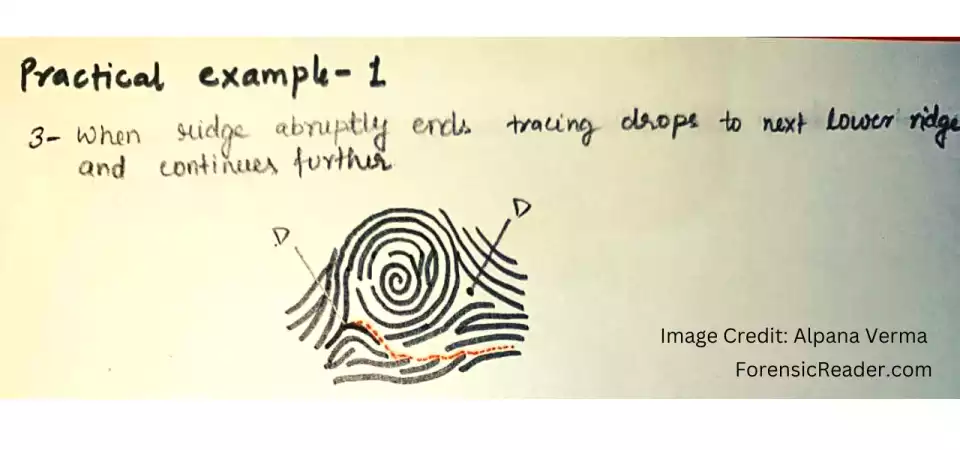
Step 4: Extends the Abrupts Ends to Right Delta
When the ridge tracing reached up to the right delta, draw a perpendicular line from the tracing line to the right delta.
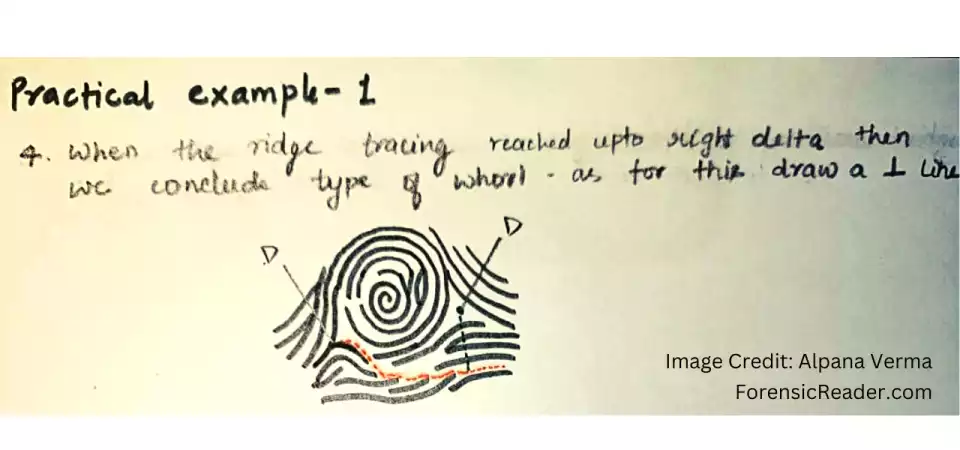
Step 5: Count Intervening Ridges
From the perpendicular line, count intervening ridges between the right delta and the respected traced ridge line.
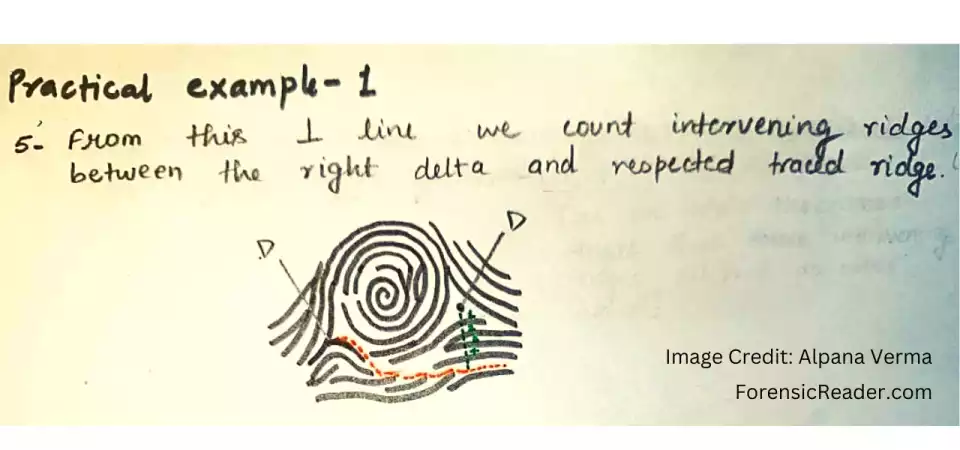
Step 6: Assign Inner, Outer, or Meeting Values
Based on the following table, assign the values.
| Classification of Ridge Tracing | Ridge Tracing Value |
|---|---|
| I- Inner | 3 or more inside/above the right delta |
| O-Outer | 3 or more outside/below the right delta |
| M-Meet (Meeting) | 0-2 ridges to the right delta |
As for this example, the ridge tracing value comes to be 4 outside (below) of the right delta. So the corresponding designation will be “Outer” and the value will be ‘O’

Practice Worksheet For Ridge Tracing in Fingerprints
- Choose the left delta and right delta points.
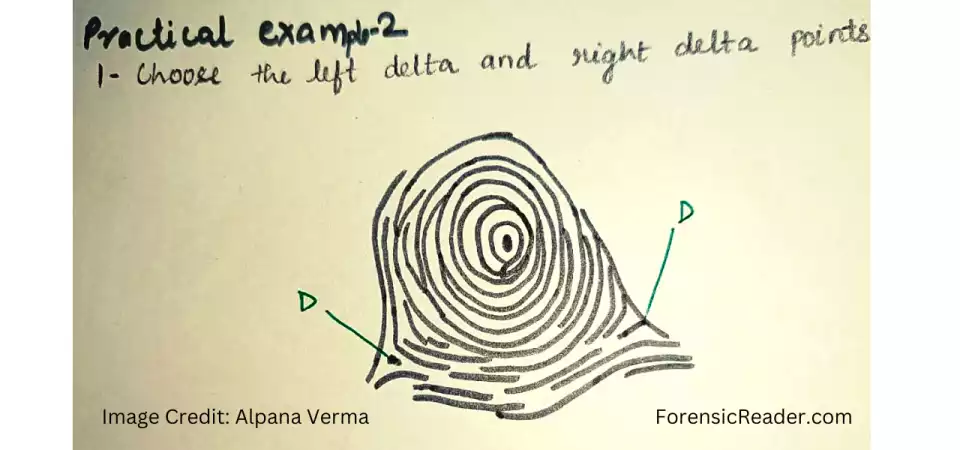
- Ridge tracing starts from the left delta and continues towards the right delta.

- Ridge tracing continues towards the right delta; There is ridge bifurcation so as per the rule ridge tracing continues to the lower branch of bifurcation.
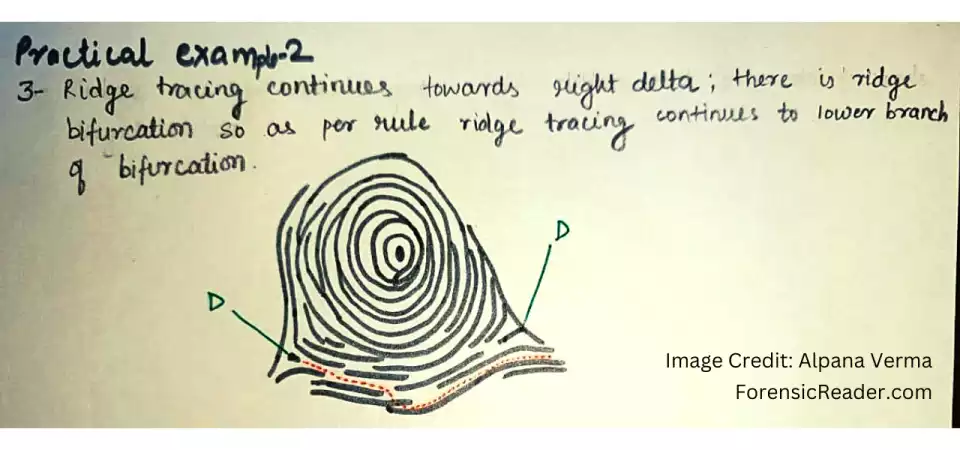
- After completion of ridge tracing, draw a perpendicular line from the right delta to the tracing line.
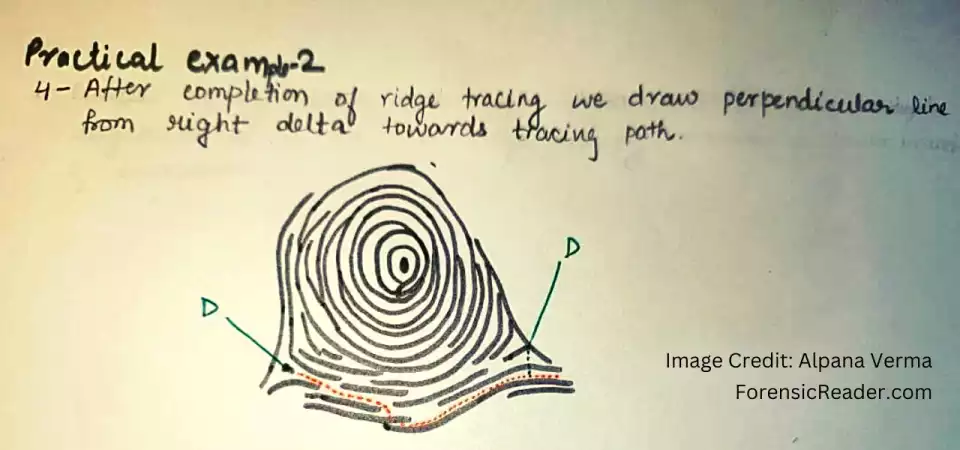
- Count the intervening ridges which fall on a perpendicular line between the right delta and the respected traced ridges.

- From counting, the values come to ‘1’ so “Meeting”.
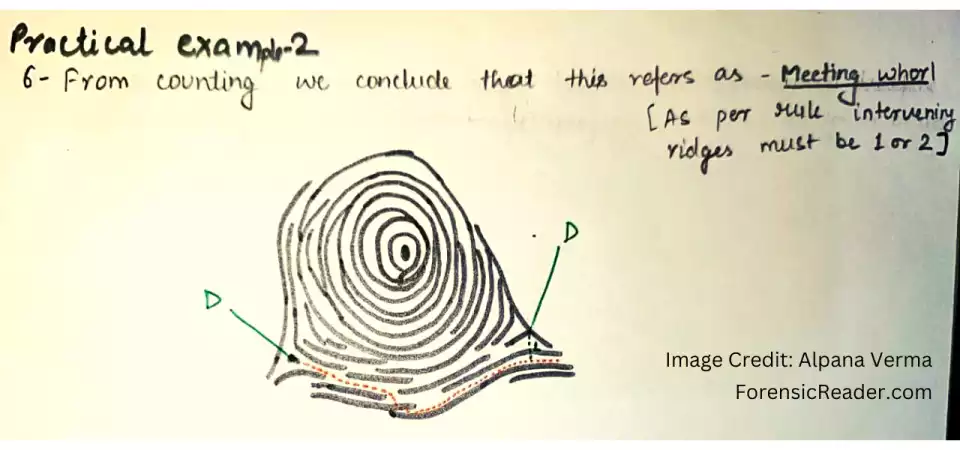
References:
- Fundamentals of Fingerprint Analysis, Second Edition By Hillary Moses Daluz [Book]
- Manual in Basic Finger Printing’ 2008 Ed. By P. Tubid [Book]
- Intelligent Biometric Techniques in Fingerprint and Face Recognition by I. Hayashi, et.al [Book]
- FBI Advanced Latent Fingerprint School By United States. Federal Bureau of Investigation [Books]
- FBI Law Enforcement Bulletin by FBI [Books]

Alpana Verma holds a master’s degree in forensics from Banaras Hindu University. She has also earned a forensic fingerprinting certification from the Central Forensic Science Laboratory, CBI. Currently, Alpana is a research intern in the entomology field, working within the Zoology department at BHU.

FR Author Group at ForensicReader is a team of Forensic experts and scholars having B.Sc, M.Sc, or Doctorate( Ph.D.) degrees in Forensic Science. We published on topics on fingerprints, questioned documents, forensic medicine, toxicology, physical evidence, and related case studies. Know More.
